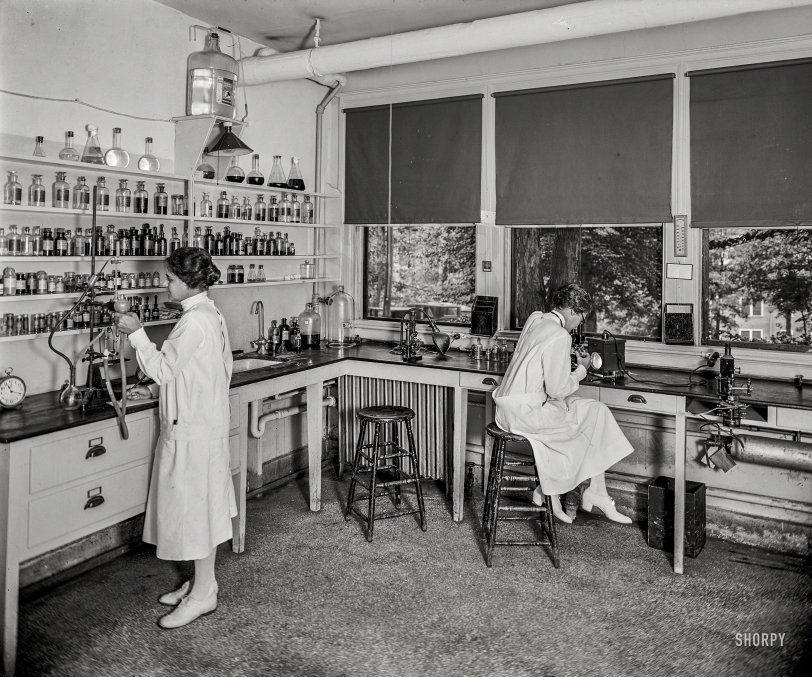


Framed or unframed, desk size to sofa size, printed by us in Arizona and Alabama since 2007. Explore now.
Shorpy is funded by you. Patreon contributors get an ad-free experience.
Learn more.

- Baldwin 62303
- Baldwin VO-1000
- Cold
- No expense spared
- Tough Guys
- Lost in Toyland
- And without gloves
- If I were a blindfolded time traveler
- Smoke Consumer Also Cooks
- Oh that stove!
- Possibly still there?
- What?!?
- $100 Reward
- Freeze Frame
- Texas Flyer wanted
- Just a Year Too Soon
- WWII -- Replacing men with women at the railroad crossing.
- Yes, Icing
- You kids drive me nuts!
- NOT An Easy Job
- I wonder
- Just add window boxes
- Icing Platform?
- Indiana Harbor Belt abides
- Freezing haze
- Corrections (for those who care)
- C&NW at Nelson
- Fallen Flags
- A dangerous job made worse
- Water Stop
Print Emporium
Laboratory Conditions: 1928

Circa 1928. "Takoma Park, Maryland. Washington Sanitarium laboratory." National Photo Company Collection glass negative. View full size.
Family Connection
My wife was born at that hospital in 1959. It's now known as Washington Adventist Hospital.
Making the Cut
I believe the apparatus clamped to the table to the right of the Microscopic Scientist is a microtome - the tank under the bench will contain carbon dioxide which is led to the small round metal piece (platen)with the radial holes. Above this is a very sharp steel blade, much like a straight-razor blade, which mounts horizontally in the 'pantograph' type assembly.
The sample to be thinly sliced is most often cast in paraffin, placed on the platen, and then the CO2 is turned on, flowing out of the holes and cooling and freezing the sample.
The blade is positioned at the edge and a cut taken. The blade mount keeps the cutting edge exactly level and in position. The machine has a lead-screw attached to the platen assembly, that ratchets up a set-able amount (like a very precise deli meat slicer) with each stroke of the blade.
The result is extremely thin sections of the sample material, which can then be mounted on a microscope slide.
Some microtomes use a special glass blade that is fractured, with the edge of the fracture doing the cutting. These are not sharpened, just fractured in a new place to get another edge.
Here is a similar device, without the 'freezing' accessories:
http://www.classicoptics.com/lab-equip/microtomes/ao880/ao880-B.html
TP
Hot times
The thermometer on the wall is registering around 85 degrees.
Van Slyke Apparatus?
Looks like the technician on the left is holding the mercury reservoir for a Van Slyke apparatus which was used in days of old to measure the bicarbonate (or CO2 tension) in the blood. Of course, today, that much elemental mercury in one place would be reason to call out the hazmat team! To say nothing about the carboy of water placed above a live 110v light fixture!!! Also love the ways electric lights were used to 'modernize' the microscopes that were built with mirrors to reflect the natural light coming through those big windows!
Does anyone know the name/purpose of the apparatus on the far right?
That alarm clock
I have the identical clock, which belonged to my great-grandfather and still works like new. The alarm is loud enough to wake the entire street, which is why I'm sure he was never late for work at the mill!

























On Shorpy:
Today’s Top 5